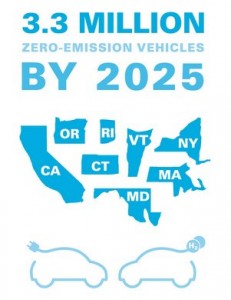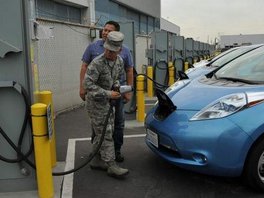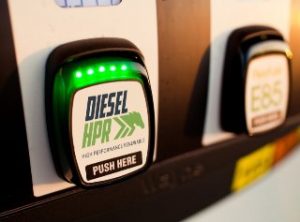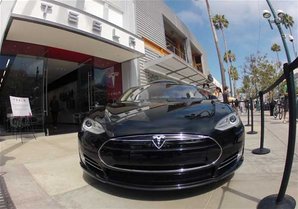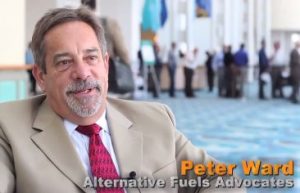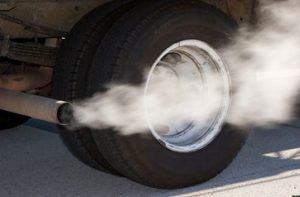by Jon LeSage, editor and publisher, Green Auto Market
Here’s my take on the 10 most significant and interesting occurrences during the past week…….
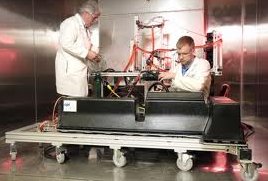 It’s all about batteries: Cost-competitive electric vehicles (EVs) with at least 200 miles of range on a single charge are on the horizon. Automakers are working with major battery suppliers such as LG Chem to roll out these models within two-to-three years. General Motors (with its recently announced Chevrolet Bolt), Ford, Nissan, and Volkswagen think they can catch up to Tesla Motors’ breakthrough with its Model S that can go 265 miles on a charge……… A new study by Stockholm Environment Institute predicts that the cost of lithium-ion battery cells will continue falling; that cost dropped about 14% per year from 2007 to 2014 and should continue dropping an average of 8% per years for the foreseeable future, which would help make EVs more affordable for car buyers.……… Kurt Kelty, Tesla’s director of battery technology, recently visited Japan to court more battery technology suppliers for its “gigafactory” to mass produce its more affordable $35,000 electric Model 3. Other Japanese suppliers – Panasonic Corp. and Denso Corp. – have already joined up on the gigafactory alliance. Kelty has been impressed with the quality level of these suppliers of components and displays, but expressed concern over their slow decision-making and risk aversion……… Sakti3, maker of solid state electrolyte batteries, just gained a $15 million investment from Dyson, a company famous for its vacuums. Details haven’t come out yet on what that partnership will be working on, but it does help Sakti3 make the case that its solid-state technology has already generated twice the energy density of the best lithium-ion batteries on the market today.
It’s all about batteries: Cost-competitive electric vehicles (EVs) with at least 200 miles of range on a single charge are on the horizon. Automakers are working with major battery suppliers such as LG Chem to roll out these models within two-to-three years. General Motors (with its recently announced Chevrolet Bolt), Ford, Nissan, and Volkswagen think they can catch up to Tesla Motors’ breakthrough with its Model S that can go 265 miles on a charge……… A new study by Stockholm Environment Institute predicts that the cost of lithium-ion battery cells will continue falling; that cost dropped about 14% per year from 2007 to 2014 and should continue dropping an average of 8% per years for the foreseeable future, which would help make EVs more affordable for car buyers.……… Kurt Kelty, Tesla’s director of battery technology, recently visited Japan to court more battery technology suppliers for its “gigafactory” to mass produce its more affordable $35,000 electric Model 3. Other Japanese suppliers – Panasonic Corp. and Denso Corp. – have already joined up on the gigafactory alliance. Kelty has been impressed with the quality level of these suppliers of components and displays, but expressed concern over their slow decision-making and risk aversion……… Sakti3, maker of solid state electrolyte batteries, just gained a $15 million investment from Dyson, a company famous for its vacuums. Details haven’t come out yet on what that partnership will be working on, but it does help Sakti3 make the case that its solid-state technology has already generated twice the energy density of the best lithium-ion batteries on the market today.- NGVAmerica reported on natural gas vehicle sales in 2014. Natural gas vehicle (NGV) production and sales fell by 6.5% from the previous year in 2014 as the dramatic drop in the prices of oil and transportation fuel softened demand for these alternative fuel vehicles. That was seen mainly by light-duty NGVs, which fell 34% in sales from 2013. During 2014, NGV production and sales reached just over 18,000 vehicles in the US. Commercial truck customers are still supportive of the technology, with heavy-duty NGVs increasing 30% in sales over 2013 and the medium-duty market seeing a rise of 24% over the previous year. NGVAmerica expects that trend to continue with production and sales holding steady or improving during 2015.
- Spy shots were taken of the Tesla Model X near the Palo Alto, Calif., headquarters. Tesla Motors has begun road testing its electric crossover as it goes through its final testing phase before being launched this summer. The test model was lightly disguised but looked like it has changed very little since its 2012 unveiling.
- Aston Martin has filed suit in federal court in Los Angeles against Henrik Fisker’s “Thunderbolt” prototype, because of “bad-faith intent to free-ride off the tremendous goodwill associated with the famous Aston Martin mark, wings logo, side vent mark, and Vanquish mark.” Aston Marton says it was too close to the iconic sports car featured in James Bond movies. Fisker, the co-founder of Fisker Automotive and a former Aston Martin design director, unveiled at the sports car at an auto show in Florida this month. The V12 coupe is available only by special order through Los Angeles-based dealer Galpin Aston Martin.
- Global electric vehicle (EV) sales grew by 76% during 2014 – 320,000 units sold, bringing the global market up to 740,000 vehicles. Battery makers had revenue of $2.17 billion supplying the battery packs for these vehicles, according to Centre for Solar Energy and Hydrogen Research, a German research company. The US made up nearly 70% of the total at 290,000 units sold. Chinas had 54,000 new EVs sold. China and Japan had 120% and 45% growth rates, respectively. Supportive government policies have helped these three countries see solid growth rates.
- TransPower, a manufacturer of electric drive systems for battery electric commercial trucks, has won $9 million from the California Energy Commission (CEC) for new four new battery-electric Class 8 trucks for demonstration projects in the state of California. The four were also partially funded by the CEC, with contributions from the US Department of Energy (DOE), South Coast Air Quality Management District (AQMD), and the Ports of Long Beach and Los Angeles.
- China is a tough market to break into. Tesla Motors CEO Elon Musk has visited China to mend broken relations. Sales of the Model S are tumbling down as early adopters have complained about how many months it has taken to place their order and later receive their car. Range anxiety is a big problem, too, as Chinese drivers have very little experience with commuting in their first-ever electric vehicle. Musk has visited Chinese President Xi Jinping and other government officials and made the point that Tesla team is getting the delivery process streamlined and correcting mistakes. He also admitted that they’ve been seeing a backlog of unsold Teslas around the car after several people have ordered the cars but never bought them. (Editor’s note: West Virginia is blocking Tesla from selling cars in state, and the Georgia legislature sent a bill to governor asking for approval on allowing Tesla to increase its stores in the state from three to five.)
- Hybrid version of the Malibu. Chevrolet will be rolling out a completely redesigned version of its midsize 2016 Malibu later this year; with that will be a new hybrid option that could be one of that vehicle segment’s most fuel-efficient models. It’s estimated to have a 45 miles per gallon (or slightly better) rating – putting it ahead of the Ford Fusion and Toyota Camry hybrid models and close to the segment-leading Honda Accord Hybrid, which has a combined fuel economy rating of 47 mpg. Speaking of new hybrids, Toyota will be adding a hybrid version of the Toyota RAV4 to its list of debuts slated for the upcoming New York International Auto Show. While Toyota and other manufacturers’ hybrid sales have softened lately, Toyota is still committed to meeting its commitment to introduce a hybrid version of every one of its volume vehicles by the end of the decade.
- Hyperloop is becoming real. The high-speed rail Hyperloop concept, introduced by Tesla Motors and SpaceX chief executive Elon Musk, is moving beyond the drawing board phase. Hyperloop Technologies Inc. has set up a headquarters space in downtown Los Angeles in a 6,500-square foot space in the city’s Arts District. The 20-person staff is starting to see new hires show up at the downtown office. An owner of the property said Hyperloop will be leasing nearly 38,000 square feet in the current building and an adjacent property over the next 12 months.
- E-bikes are expected to see real sales growth with electric scooters selling three times as many units as electric motorcycles. A new Navigant Research study reports that global annual sales of e-motorcycles should increase form 1.2 million in the 2015 to 1.5 million in 2024; and e-scooters should increase from 4.1 million units sold globally this year to over 4.4 million in 2024. Several large OEMs are expected to enter the space and battery costs should be decreasing, making the e-bikes more affordable.
- Extra: Solar power vs. utilities article in Green Auto Market Extended Edition. Several major electric utilities are fighting legislative/regulatory battles to avoid state mandates to produce a significant share of their power though renewable energy such as solar. One argument utilities make is that homeowners and commercial property owners with solar are not paying their share for the cost of grid maintenance. When I chose to bring in solar to power my house last year, I didn’t expect how long it would take to have it installed and activated, and how my utility would react. Here’s more on how to subscribe to that weekly newsletter and read all about it, plus gasoline, diesel, and oil price trends.

